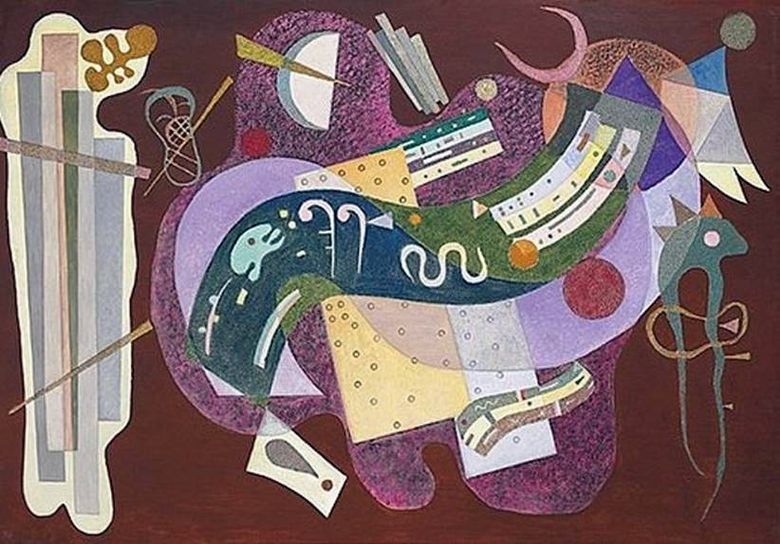
This is the work of the late Kandinsky, referring to the period of “biomorphic abstraction”, which is also called “Parisian”. The famous collector Solomon Guggenheim bought it directly by the artist in 1936. Entering the large collection, the picture was exhibited a lot, mainly in the US.
But in 1964 the Guggenheim Museum decided to sell 50 paintings of Kandinsky at once, which provoked a protest from American art lovers. As a result, 29 paintings, being bought by European museums and collectors left the United States. The painting “Rigide et Courbe” was purchased by an anonymous American collector. Half a century passed and she returned to the market. November 16, 2016 at Christie’s auction in New York, the picture was sold for 23.3 million dollars. As in many abstract paintings by Kandinsky, upon closer examination, one can see quite realistic elements.
For example, on the left side we see a group of related vertical forms, which could well be a reference to the famous fascist symbol – a very relevant topic for that time. There is also a clear exclamation point below and horns on the right, which some critics interpret as a hint at the myth of the abduction of Europe. It is also interesting that in this work the artist uses a new technique of painting – the mixing of sand into the paint to give the surface texture.
 Composition VIII by Vasily Kandinsky
Composition VIII by Vasily Kandinsky Isolated objects by Vasily Kandinsky
Isolated objects by Vasily Kandinsky Composition VII by Vasily Kandinsky
Composition VII by Vasily Kandinsky Binz on Rugen by Vasily Kandinsky
Binz on Rugen by Vasily Kandinsky Dominant curve by Vasily Kandinsky
Dominant curve by Vasily Kandinsky A small picture with yellow by Vasily Kandinsky
A small picture with yellow by Vasily Kandinsky Dur-flexible – Wassily Kandinsky
Dur-flexible – Wassily Kandinsky Duro-Flexible – Wassily Kandinsky
Duro-Flexible – Wassily Kandinsky